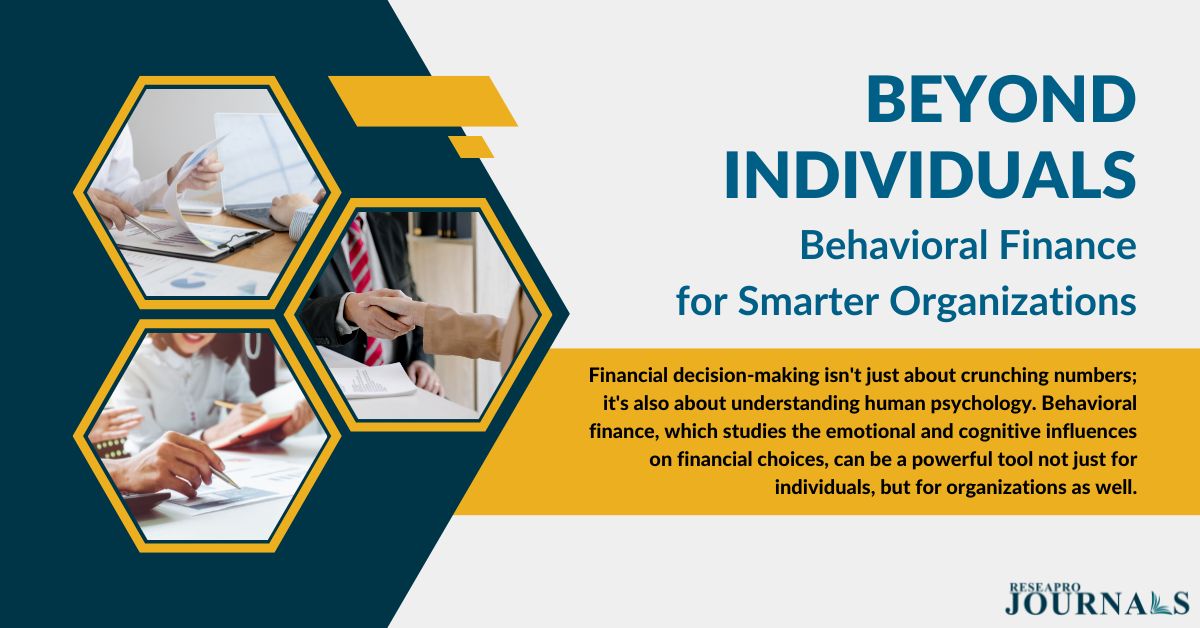
Financial decision-making isn’t just about crunching numbers; it’s also about understanding human psychology. Behavioral finance, which studies the emotional and cognitive influences on financial choices, can be a powerful tool not just for individuals but also for organizations.

Why Behavioral Finance Matters for Businesses?
By understanding how biases and emotions impact financial decisions, organizations can:
- Make smarter investments: Behavioral finance can help identify biases that might lead to poor investment choices. Framing investment options and considering how employees perceive risk can guide better strategic decisions.
- Design effective incentives: Knowing how employees react to rewards and punishments allows companies to create compensation and bonus structures that motivate desired financial behaviors. For example, offering matching contributions for retirement plans can encourage employees to save more.
- Gain customer insights: Behavioral finance sheds light on customer purchasing decisions, informing marketing strategies, pricing models, and product development. Understanding how framing affects choices can help businesses present products or services in a way that resonates best with their target audience.
Beyond Profits: The Power of Behavioral Finance for Risk Management
Behavioral finance can also help organizations mitigate risk in several ways:
- Promote employee financial wellness: Businesses can identify factors that might lead employees to make risky financial decisions, such as high-interest debt. Offering financial wellness programs and education can promote employee financial stability, reduce stress, and potentially improve productivity.
- Combat confirmation bias: Group decision-making can be susceptible to confirmation bias, where teams favor information that confirms their existing beliefs. Behavioral finance can help foster a culture of questioning assumptions and considering alternative perspectives when making financial decisions.
- Enhance fraud detection: Understanding how biases can cloud judgment can be crucial in preventing fraud. Financial controls and procedures can be designed to consider these biases and make it more difficult for fraudulent activity to go unnoticed.
Building a Financially Savvy Organization
Here are some strategies to integrate behavioral finance into your organization:
- Invest in employee education: Educating employees about behavioral finance can help them recognize biases in their own decision-making, personally and professionally.
- Leverage data analytics: Analyzing financial data through a behavioral lens can reveal hidden patterns and biases that might otherwise be missed.
- Implement behavioral nudges: Subtle cues and prompts can encourage employees to make more financially sound decisions. For instance, automatically enrolling employees in retirement plans with an opt-out option can increase participation.
By embracing behavioral finance, organizations can make informed financial decisions, manage risk more effectively, and ultimately achieve their long-term financial goals.
